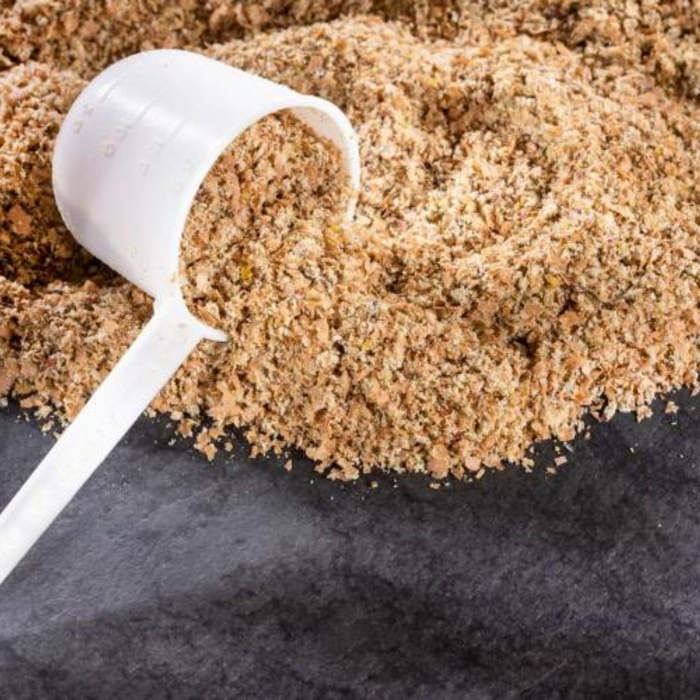
Characteristics of the apricot
- Rich in antioxidants
- Rich in carotenoids
- Rich in fibre
- Source of vitamins A and C
- Low in calories
- Stimulates intestinal transit
Nutritional and caloric values of apricots
Consumed fresh, dried or in juice, apricots are rich in fibre, antioxidants and vitamin A. Dried, it is appreciated by sportsmen and women for the energy it gives them and for its high iron and copper content.
Dried apricots are sweeter?
The amount of sugar in a dried apricot is the same as in a fresh apricot. But as in all dried fruit, the sugar is more concentrated. The process of dehydrating the fruit reduces its water content, thus concentrating its sugar content, but also various nutrients, including vitamins and minerals. This makes apricots and other dried fruits nutritionally interesting.
Focus on the micronutrients contained in apricots
Among the nutrients contained in good quantities in apricots, we can mention the following:
- Vitamin A: fresh and dried apricots are excellent sources of vitamin A.
- Iron: dried apricots are a good source of iron for men and for women. fresh apricots are a source of iron for men.
- Copper: dried apricots are a good source of copper. Fresh apricots are a source of copper.
- Vitamin B3 (niacin): dried apricots are a source of vitamin B3.
- Vitamin B5 (pantothenic acid): dried apricots are a source of vitamin B5.
- Vitamin C: fresh apricots are a source of vitamin C.
- Vitamin K: dried apricots are a source of vitamin K for women.
- Magnesium: dried apricots are a source of magnesium for women.
- Phosphorus: dried apricots are a source of phosphorus.
- Potassium: fresh and dried apricots are sources of potassium.
The benefits of apricots
Several prospective and epidemiological studies have shown that a high consumption of fruit and vegetables reduces the risk of cardiovascular disease, certain cancers and other chronic diseases. The presence of antioxidants in fruit and vegetables may play a role in these protective effects. However, very few studies have analysed the specific health effects of apricots.
An excellent source of fibre
Apricots are a source of fibre. In addition to preventing constipation and reducing the risk of colon cancer, a high-fibre diet can help prevent cardiovascular disease, as well as control type 2 diabetes and appetite. A ½ cup (125 ml) serving of fresh apricots provides 5% and 8% of the recommended daily fibre intake for men and women aged 19 to 50 respectively. As for dried apricots, a ¼ cup (60 ml) portion meets 8% and 12% of these same intakes.
Apricots, a natural anti-inflammatory?
According to a study, the daily consumption of 3 dried or pickled Japanese apricots (umeboshi type) could reduce the severity of chronic gastritis. Chronic gastritis is an inflammation of the stomach lining caused by the presence of Helicobacter pylori bacteria. Japanese apricots are said to reduce the inflammatory effects of the H. pylori bacteria in the stomach. Chronic inflammation of the stomach can lead to stomach cancer in some people. However, further studies are needed to confirm whether eating Japanese apricots can reduce this risk.
Apricots are rich in antioxidants
Apricots contain various antioxidants, particularly phenolic compounds of the flavonoid family. These compounds neutralise free radicals in the body and thus prevent the onset of cardiovascular diseases, certain cancers and various chronic diseases. The antioxidant content of dried apricots is higher than that of fresh apricots. Apricot purees, jams and juices (nectars) contain much the same antioxidant compounds, but in smaller quantities than in fresh or dried apricots.
A real wealth of carotenoids
Apricots also contain carotenoids, mainly beta-carotene, a carotenoid that contributes greatly to their orange colour, as well as a small amount of lycopene. In the body, beta-carotene has the ability to convert to vitamin A. In general, the total carotenoid content of apricot peel is 2 to 3 times higher than that of the flesh. Even though fresh apricots contain half as much beta-carotene as carrots (one of the best sources), they are still a very interesting source of beta-carotene. Dried apricots contain slightly less.
A word from the nutritionist
Carotenoids, including beta-carotene, are better absorbed by the body when a small amount of fat is consumed at the same time. It is therefore advisable to eat, for example, dried apricots with a few nuts or apricot juice with a piece of cheese.
How to prepare apricots?
Apricots in desserts
Apricots can easily be used in many desserts such as sorbets, ice creams and frozen yoghurts, pancakes and soufflés, rice pudding, cakes, clafoutis, charlottes, tarts and muffins. Don't hesitate to combine it with almonds, its ideal companion.
It can also be simply poached in maple syrup or honey, or dipped in melted chocolate.
Particularly rich in pectin, it can be used to make excellent jams in which grape juice or honey can replace sugar.
An ideal fruit for making dressings, sauces and condiments
- Vinaigrette. Mix apricot juice with vegetable oil, cider vinegar, mustard and, if desired, a little Tabasco sauce.
- Mustard Condiment. Mix ½ cup of apricot jam (preferably unsweetened or sweetened with fruit juice) with 2 tbsp of Dijon mustard. Serve with meat or add to a dressing.
- Chutney sauce. Unripe apricots are particularly suitable for this dish. Puree them with coriander leaves, ginger root, chopped onions, hot pepper and lemon juice.
Apricot and poultry, always a successful combination
- Apricot stuffing. Mix chopped dried apricots, pecans, onions, cooked wild rice and herbs;
- Glaze poultry - or a roast - with apricot jam before cooking. Add garlic, soy sauce, olive oil and rosemary to the jam. Reserve some of the mixture as a side sauce and spread the rest over the meat. Leave to marinate for ½ hour before putting in the oven.
Apricot salad
Mix slices of fresh or dried and rehydrated shiitake mushrooms with pieces of dried apricots. Boil green beans, carrots and daikon (or another type of radish) in thinly sliced or chopped form for a few minutes. Refresh them under cold water before adding them to the first two ingredients. Serve with a sauce made from tofu, tahini (sesame paste), soy sauce, rice vinegar and mirin (a Japanese cooking wine), blended in a blender. For decoration, add a few strips of lemon peel.
Contraindications and allergies to apricots
Although apricots are excellent for the health of the body, there are certain contraindications to their consumption. Indeed, in some particularly sensitive people, it can cause digestive disorders and allergies. In case of doubt, it is imperative to consult a health professional.
🔆 Recipes
Adblock test (Why?)






